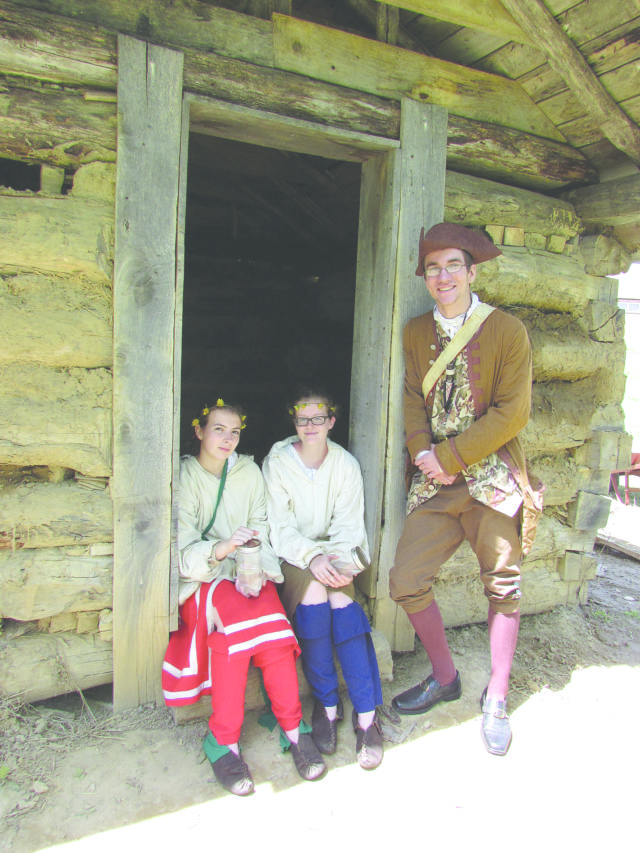Mantua – For the sixth consecutive year, a group of around thirty colonists and Native Americans populated an 18th century encampment in Mantua this week. Roughly 600 curious visitors from present-day elementary schools came to investigate the area and interact with these special visitors on the grounds of Crestwood High School, taking part in the CHS American Experience Academy Frontier Days. For CHS Academy students, this week represents the culmination of a year’s worth of lessons in environmental science, English, and of course, history. For elementary-aged students, this week brings the stories of 18th century Ohio history to life in a fun and tangible way.
One week prior, the Academy students welcomed skilled re-enactors from groups like the Ramrod Busters from the Canton area, as well as local craftsmen and women who shared their knowledge on flintlock rifles, metal and leatherwork, colonial cooking, 18th century medicine, Native American crafts and culture. The following week, Academy students became the teachers as students from Crestwood Intermediate, Streetsboro and Garrettsville Schools visited to explore the frontier settlement at CHS. “The adjustments they make in front of students are incredible,” remarked Academy creator and history teacher Angus McDougall, commenting on students’ ability to absorb details from the experts and effectively share that information with visiting students. “The growth they make in two days time is impressive.”

Trees, offering shade to weary colonists and fifth-graders alike, border the grassy area next to the high school where the settlement is located. The only permanent structure is a rustic log cabin currently under construction. Each Academy class adds to the cabin as they learn valuable skills needed to make authentic additions to the structure. As present-day students are led through a series of eight stations, they have the opportunity to try their hand at some of those skills. Near the cabin, students watch as their guides show them how colonists would have cut wooden shingles for the cabin’s roof using a two-man saw.
Another station showed kids how flint and steel can be used to start a fire for heating and cooking, while another nearby featured campfire cooking, where students sampled chowder and learned to make biscuits and butter. A stop at the cabin provided a lesson in colonial medicine, and a woods walk shared details on plants and their 18thcentury uses as well as information on settler and Native American relations. Students watched a colonial militia drill, and showed off their skills with a bow and arrow. Lastly, they learned to play the Native American game of begataway, a precursor to lacrosse. Each station was manned by an Academy student dressed in period-appropriate clothing for their particular role on the frontier.
The unusual course has a cult following, but in a positive way, as an average of 20 – 30 former students dust off their frontier apparel and return from college to participate in the annual weekend event, rain or shine. They’re sure to grill McDougall and Academy science teacher Andy Brown to find out if the current year’s group has what it takes to continue the proud tradition they began.
The program, through which students earn college credit, includes hands-on skills like fishing and tanning animal hides. Students must create their own 18th-century character narrative, then hand-make their period-appropriate apparel to best portray it. Students also study the college-level works of noted historians Gordon S. Wood, Bernard Bailyn, and Timothy Shannon, as well as the contemporary work of Richard White. They learn the importance of footnotes, “where all the good stuff is,” according to McDougall. Countless graduates of the program attribute much of their success in college due to the rigorous program. Sadly, due to budget cuts, CHS will only offer next year’s students the first course – Academy 1, of a two-course program.















